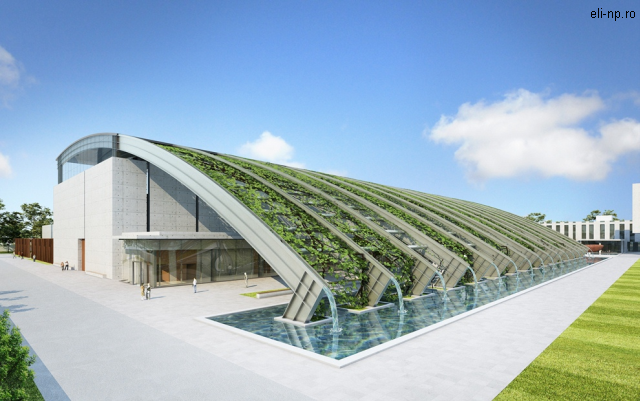A Project with Multiple Uses
A giant nuclear physics project, known as ELI, is under way in Magurele.

Corina Cristea, 21.08.2015, 14:00
A giant nuclear physics project is under way in Magurele, a village close to the capital Bucharest. Once built, the laser that scientists are working on there will contribute to the treatment of cancer and the identification of radioactive substances, will help test the electronic systems of satellites and will be used in experiments trying to establish how some of the elements of the Universe were formed. Academician Nicolae Zamfir, head of Institute of Atomic Physics in Magurele and coordinator of the project Extreme Light Infrastructure – Nuclear Physics, has told us more about the project:
Nicolae Zamfir: “The idea of the Extreme Light Infrastructure project was launched 9 years ago, in 2006, by a group of European laser physicists coordinated by the renowned professor Gerard Mourou. Professor Mourou is a Frenchman who lived in the US for 20 years and returned to coagulate the European researchers ideas and efforts in the field of lasers. The ELI project has been put on the European list of megaprojects, that is, major projects to be conducted in Europe in the next 20 or 30 years. There are 36 projects on this list and one of them is building a laser 1000 times more powerful that any laser ever built. Soon after the project was presented, the European Commission financed its first stage, the preparation stage, with European scientists having to set the details regarding how and where to build the laser. Their proposal was green lighted by the EU research ministers in 2009.
No state, no matter how developed, can afford building something worth billions of euros. That is why, physicist Nicolae Zamfir says, a decision was made for the elements of the ELI project to be built in 3 East European countries, the Czech Republic, Hungary and Romania, which can benefit from structural funds.
There are three main reasons why Magurele has been picked to host this important project. The first reason is the long technical and scientific tradition here, spanning more than 6 decades. The second reason is the fact that Magurele hosts the largest number of research institutions in the country, namely, the Institute of Nuclear Physics and Engineering, the Institute of Laser, Plasma and Radiation Physics, the Institute of Materials Physics, the Institute of Optoelectronics, the Institute of Physics of the Earth and the Bucharest Universitys Faculty of Physics. Finally, the third reason is that Romania was the 4th country in the world to build a laser in the early 1960s, at the Institute of Atomic Physics in Magurele.
Romanias status in the scientific field counted for much, academician Nicolae Zamfir said, and mentioned that in nuclear physics, for instance, Romania is in the worlds first echelon of scientific research after major powers such as Germany, France, Britain and Italy.
Nicolae Zamfir: “The ELI project is extremely important for the Romanian physicists in Magurele as well as for Romania, but it is equally important at European or global levels. This is a project which places us on a privileged position, because everybodys eyes are now focusing on Magurele. This is an entirely new instrument and expectations are high. When you have such high-tech equipment you most certainly expect groundbreaking results. In physics, this translates into new laws, research and applications. The ELI project brings Romania into an international hall of fame and that helps us get integrated in this global set of values.
A treatment for cancer without the side effects of chemotherapy and a scanner for radioactive waste are just a couple of applications experts believe will stem out of this research in the next 10-20 years. Electronic circuits on satellites can be tested with this laser. The life of a satellite depends on how well its circuits can withstand cosmic radiation and this laser will enable scientists to emulate the type of radiation bombarding a satellite in the outer space. The laser in Magurele is expected to help explain the formation of some chemical elements, because from Mendeleevs Periodic Table, scientists nowadays can explain only the formation of chemical elements lighter than iron. To forge elements with heavier masses you need bigger forces than those known to be occurring in stars.
The project of Magurele will create 250 new jobs, out of which only 60 have been filled so far.
Nicolae Zamfir: “We have scientists here who are on par with their counterparts in any research institute or university in the world. Some of them work in Romanian research centers not because they couldnt find other jobs, but because they are happy with their present job and with what they do at present. There are also foreign researchers from countries like Poland, Bulgaria, France, Italy, Britain, or even from outside Europe, from the USA, China, India, Japan, 30 in total. There are 20 Romanian researchers who have just come back from abroad, PhDs, or post-PhDs. Some researchers are affiliated with certain universities, while others come from private corporations; we have a couple of exceptional engineers who worked in the USA for 20 years now.
ELI is expected to become operational in 2018.






























